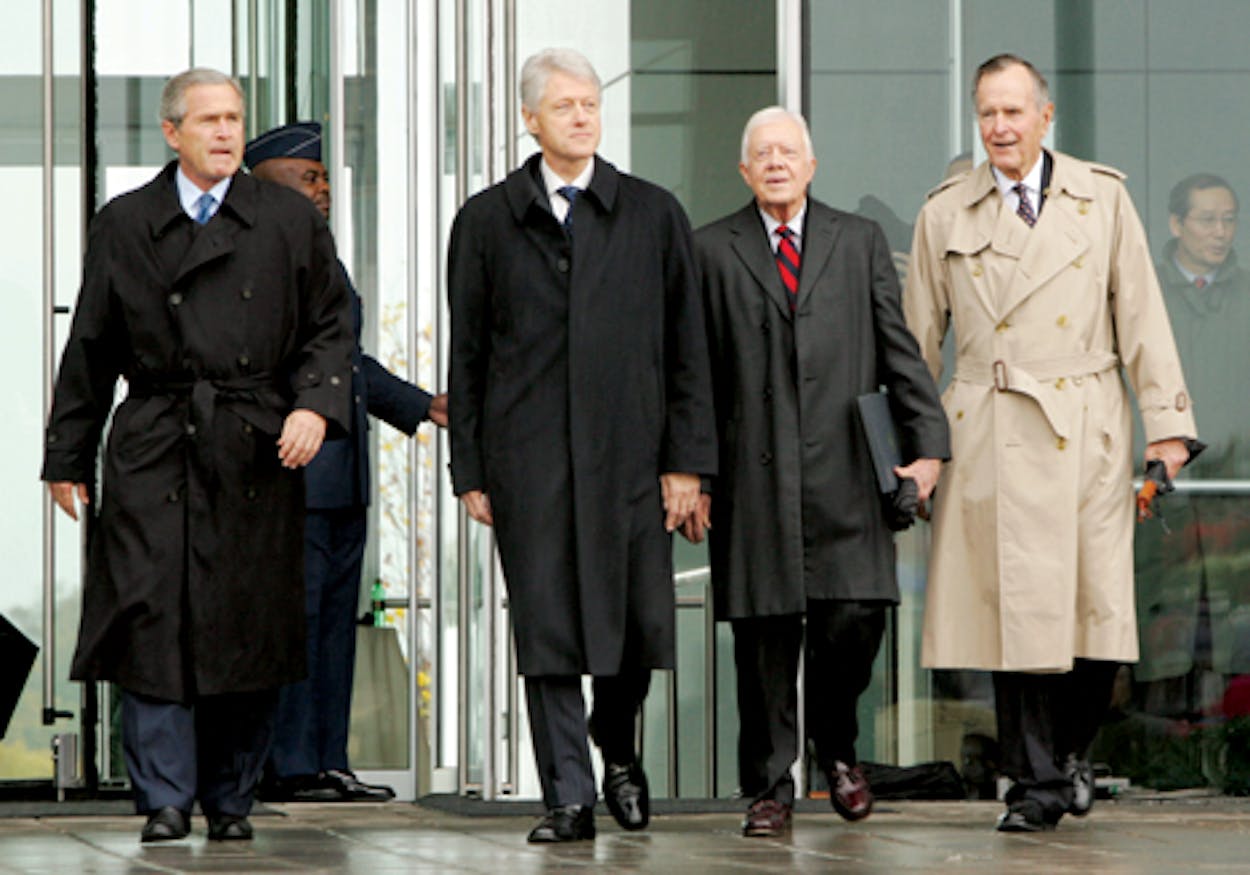“Take the grips up to the attic.” That was Harry Truman’s response to a reporter who asked him, as he arrived back home in Independence, Missouri, after leaving the White House, what he intended to do first (“grips,” for all you kids out there, used to be a common synonym for “suitcases”). Truman was a famously modest person, but his reply underscores the profound strangeness of leaving the Oval Office. There are few transitions more poignant than the one our outgoing presidents undergo—from the leader of the free world, most powerful human on earth, to private citizen in a matter of minutes.
But far more interesting than what a president does in the first few hours after leaving office is what he (or she—someday it’ll happen) decides to do with the rest of his life. George Washington, the first post-president, returned to Virginia, the state that has sent more presidents to the White House than any other, where he farmed tobacco, corn, and wheat for the rest of his days, with a brief interruption for military service. Thomas Jefferson built the University of Virginia. Ulysses Grant wrote a superb autobiography. Theodore Roosevelt went on safaris. Some have been more involved than others. Lyndon Johnson, burned by an unpopular war and unsure about his place in history, lived out his post-presidency in self-imposed exile on his ranch on the Pedernales River. William Howard Taft, on the other hand, went on to be the chief justice of the Supreme Court for nine years.
Since Truman put his grips away, modern former presidents have taken on a more engaged role. “In contrast to their predecessors, ‘formers’ are living longer, doing more, and [are] in a position to wield greater influence on U.S. policy,” writes Mark Updegrove, the director of the Lyndon Baines Johnson Library and Museum, in Austin, in his 2006 book, Second Acts: Presidential Lives and Legacies After the White House. “In effect, the post–White House years have become a new phase of presidential privilege.” More and more, formers are global brands unto themselves, capable of effecting great change on a variety of issues outside the political process.
The unofficial turning point for this more active stage in the post-presidency comprises two events: the publication of a presidential memoir and the groundbreaking of a presidential library. In November, George W. Bush, our newest post-president, did both, and to see what was coming next for the forty-third president, we sent Updegrove to Bush’s Dallas office for an interview. That Bush had agreed to the interview was news in and of itself. Though he’s recently made the rounds to promote his memoir, Decision Points, he has maintained a decidedly low profile since leaving office. But in this hour-long sit-down he was remarkably frank, ranging over a variety of topics, from his vision for the Bush Institute, at Southern Methodist University, to his relationship with his father to the motives behind his administration’s Africa policy.
What’s clear from this interview (“Bush 2.0”) is that Bush will be the most engaged post-president Texas has ever seen, though the bar for that, to be fair, is not very high. Johnson, whose post-presidency lasted only four years, never did emerge from his exile. And George H. W. Bush, though he’s put in a number of humanitarian appearances, has said that he didn’t intend to “save the world” after the White House. Bush 43, the only Texas president to serve two terms, insists that he wants to stay out of the press (unlike Theodore Roosevelt, who had a reporter posted full-time outside his Long Island home in case he thought of something to say), but he will likely remain active, playing a post-presidential role closer to Richard Nixon’s or Bill Clinton’s than to his father’s. To which we say, bring it on.
NEXT MONTH
Bum Steers, the headache of redistricting, an East Texas squirrel hunt, a quarter century of Don’t Mess With Texas, and the murder of a governor’s son.
- More About:
- Politics & Policy
- George W. Bush







